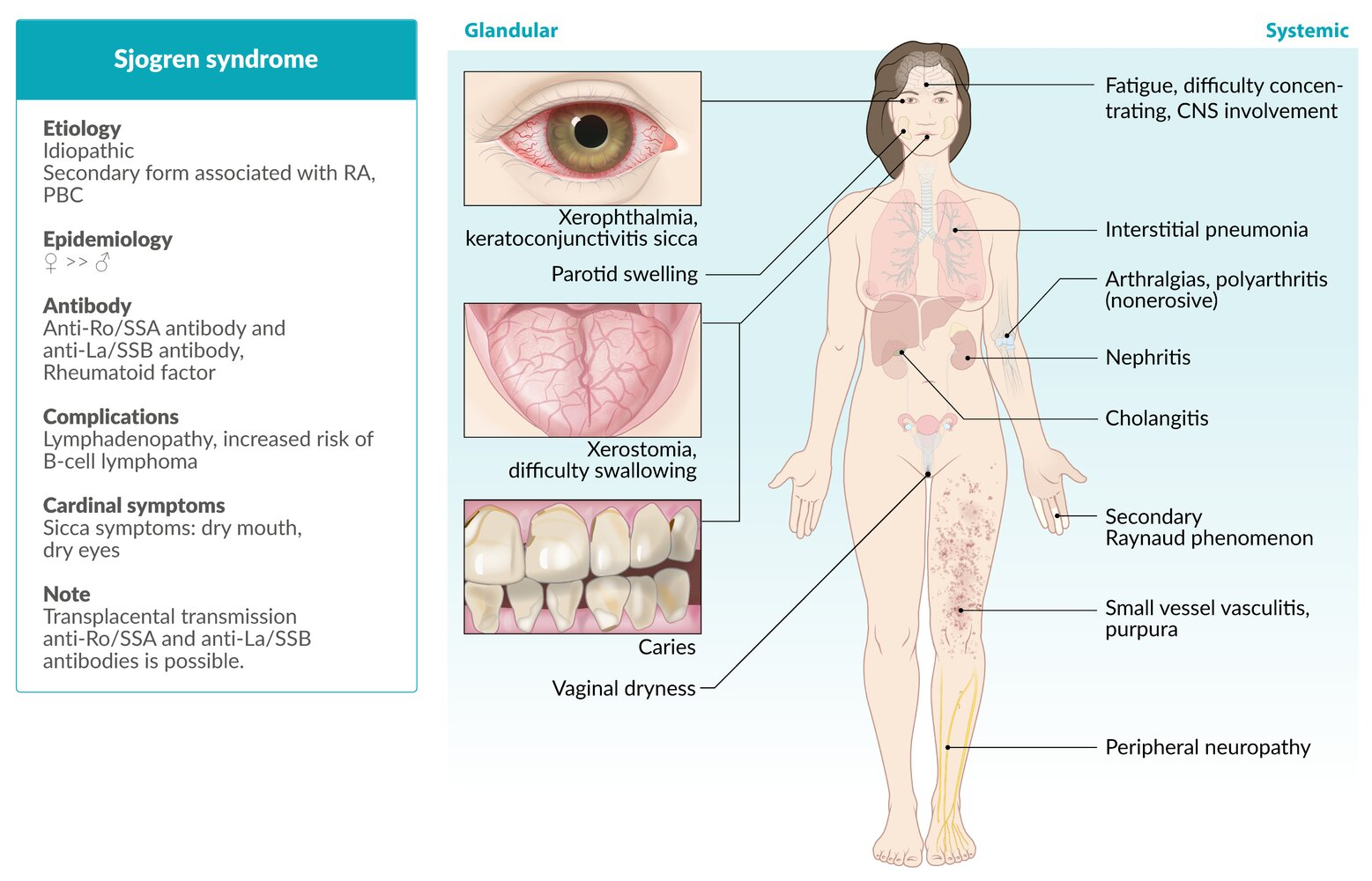Sjogren syndrome is a chronic inflammatory autoimmune disease that most commonly occurs in middle-aged women.
Epidemiology
Etiology
- Primary Sjogren syndrome: idiopathic (association with HLA-DR52)
- Secondary Sjogren syndrome: associated with another autoimmune disease, e.g., rheumatoid arthritis, systemic lupus erythematosus, systemic sclerosis, polymyositis, or primary biliary cirrhosis
Pathophysiology
Clinical features

Sicca syndrome
- Ocular symptoms
- Xerophthalmia: dry eyes due to decreased secretion of tears (daily, persistent)
- Keratoconjunctivitis sicca
- Conjunctival injection
- Eye itching or burning sensation
- Recurrent sensation of sand or a foreign body in the eyes
- Oral symptoms
- Xerostomia: dry mouth due to decreased secretion of saliva (daily, persistent) which may lead to:
- Dental caries and oral infections
- Parotid gland enlargement, often bilateral
- Tongue fissures
- Xerostomia: dry mouth due to decreased secretion of saliva (daily, persistent) which may lead to:
Diagnostics
Treatment
Complications
- Development of associated conditions
- Autoimmune diseases, e.g., systemic lupus erythematosus, rheumatoid arthritis
- B-cell lymphomas, e.g., MALT lymphoma
- Prevalence ∼ 5%
- Frequently manifests as unilateral, persistent parotid enlargement
- Predictors of lymphoma include lymphadenopathy, palpable purpura, and cryoglobulinemia.
- Renal tubular acidosis type 1
- Corneal scarring, ulcer, rupture, and infection
- Pregnancy: fetal loss, infant with neonatal lupus syndrome and associated complete heart block